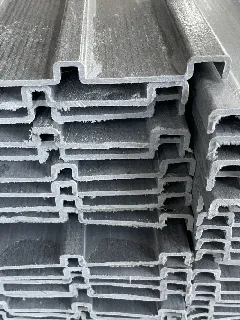loading...
- No. 9, Xingyuan South Street, Dongwaihuan Road, Zaoqiang County, Hengshui, Hebei, China
- admin@zjcomposites.com
- +86 15097380338
- Welcome to visit our website!
waste water treatment equipment
Waste Water Treatment Equipment An Overview
Wastewater treatment is an essential process that ensures the safety and sustainability of our water resources. As urbanization increases and industrial activities expand, the demand for effective wastewater treatment solutions has become paramount. Wastewater treatment equipment plays a crucial role in this process by facilitating the removal of contaminants and pollutants from water before it is released back into the environment or reused for various applications.
Types of Wastewater Treatment Equipment
1. Preliminary Treatment Equipment This stage is crucial for removing large debris and solids from wastewater. Equipment such as bar screens and grit chambers are commonly used to filter out large objects and sediment. These systems prevent damage to downstream equipment by ensuring that only smaller, treatable materials proceed to the next stages of treatment.
2. Primary Treatment Equipment Following preliminary treatment, the primary treatment stage aims to reduce the total suspended solids (TSS) and biological oxygen demand (BOD) levels in wastewater. Sedimentation tanks are pivotal in this phase, allowing solids to settle at the bottom while clarifying the liquid. This process removes a significant portion of the contaminants before further treatment.
3. Secondary Treatment Equipment This phase further reduces organic matter and harmful pathogens through biological processes. Aeration tanks are integral here, where microorganisms digest organic pollutants in the presence of oxygen. Different systems, such as activated sludge systems, trickling filters, and biofilm reactors, are employed based on the specific requirements and characteristics of the wastewater being treated.
4. Tertiary Treatment Equipment Sometimes referred to as advanced treatment, this stage focuses on the removal of remaining contaminants and nutrients, such as nitrogen and phosphorus. Tertiary treatment might involve processes like filtration, advanced oxidation, and disinfection methods like ultraviolet (UV) light or chlorination. This step is essential for producing high-quality effluent that is safe for discharge or reuse, especially in water-scarce regions.
waste water treatment equipment

5. Sludge Management Equipment Throughout the treatment process, significant quantities of sludge are generated. Proper management of this sludge is crucial as it contains concentrated pollutants. Equipment such as anaerobic digesters, centrifuges, and belt filter presses are used to stabilize, dewater, and manage the sludge effectively. This not only minimizes environmental impact but also allows for the potential recovery of biogas and nutrients.
Importance of Wastewater Treatment Equipment
The importance of wastewater treatment equipment cannot be overstated. It plays a vital role in protecting public health by reducing waterborne diseases and preventing the contamination of drinking water sources. Additionally, effective wastewater treatment is crucial for preserving aquatic ecosystems, ensuring that discharged effluent meets environmental standards.
Moreover, advances in technology are continuously improving the efficiency and effectiveness of wastewater treatment processes. Innovations such as membrane bioreactors, smart monitoring systems, and energy recovery technologies are paving the way for more sustainable treatment solutions.
Conclusion
In conclusion, wastewater treatment equipment is an integral component of modern environmental management. As we face increasing water scarcity and pollution challenges, investing in efficient and effective treatment technologies is imperative. By ensuring proper wastewater treatment, we not only protect our water resources but also contribute to a sustainable future for generations to come. Whether through sophisticated treatment plants or decentralized systems, the importance of wastewater treatment equipment remains a central focus in the quest for cleaner water and a healthier planet.
-
Transform Your Spaces with FRP Grating SolutionsNewsNov.04,2024
-
The Versatility and Strength of FRP RodsNewsNov.04,2024
-
The Excellence of Fiberglass Water TanksNewsNov.04,2024
-
The Benefits of FRP Grating for Your ProjectsNewsNov.04,2024
-
Elevate Your Efficiency with FRP Pressure VesselsNewsNov.04,2024
-
Welcome to the World of FRP Pressure VesselsNewsOct.12,2024
-
Unveiling the Future of Filtration: Why FRP Filter Vessels are a Game ChangerNewsOct.12,2024
